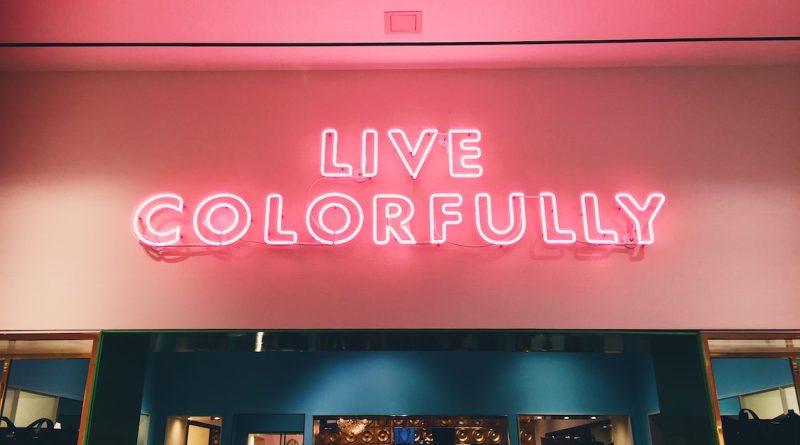What Role Do Colors Play in the Fashion Industry?
From bold and vibrant to subtle and understated, colors play a crucial role in the fashion world. They can convey emotion, evoke cultural associations, and even influence our purchasing decisions. But what exactly is the role of colors in the fashion industry, and how do they shape how we dress and present ourselves to the world?
In this blog post, we’ll take a closer look at the psychological, cultural, and practical considerations of using color in fashion and explore how it plays a central role in everything from trend forecasting to branding and marketing.
1. The Psychological Effect of Colors
The psychological impact of colors is well-documented and can be a powerful tool in the fashion industry. Different colors are associated with emotions and moods and can convey specific messages or themes. For example, red is often associated with passion, energy, and power, while blue is associated with calmness, trustworthiness, and stability.
Fashion designers and brands can use these associations to their advantage when choosing colors for their collections or marketing campaigns. A bold red dress might be perfect for a date night or a night out on the town, while a calming blue suit might be more suitable for a business meeting.
The spearmint color is a fresh and cheerful shade of green that can be a great choice for clothing, especially during the spring and summer months. It can add a pop of color to an outfit and can be paired with various other colors. Additionally, green is often associated with nature and can bring a sense of calm and relaxation to an outfit.
Of course, it’s important to note that these associations are not universal and can vary depending on the context and the individual. However, understanding the general psychological impact of colors can be a valuable resource for fashion professionals looking to create specific moods or themes with their clothing and accessories.
2. Cultural Significance of Colors
Colors can also have significant cultural meanings and associations, influencing fashion choices. For example, in Western cultures, white is often associated with purity and innocence, while in many Eastern cultures, it is associated with death and mourning. Similarly, the color red has different associations in different cultures – in some cultures, it is seen as a symbol of luck and prosperity, while in others, it is associated with danger and aggression.
Understanding the cultural significance of colors can also help fashion professionals create collections or marketing campaigns that are more culturally sensitive and inclusive. By being mindful of the meanings and associations of different colors, they can create a more relatable and appealing fashion to a diverse audience.
3. Use of Colors in Branding and Marketing
Colors are an essential element of branding and marketing in the fashion industry. Brands often use specific colors as part of their visual identity, and these colors can become closely associated with the brand and its products. For example, Tiffany & Co. is known for its distinctive robin’s egg blue color, used in its packaging, marketing materials, and even the interior of its stores. This consistent use of color helps to establish the brand’s unique identity and create an emotional connection with consumers.
In addition to establishing a brand’s identity, colors can also appeal to specific audiences or target markets. For example, a brand targeting young, trendy consumers might use bold, vibrant colors in its marketing efforts, while a more mature, sophisticated audience might use more muted, neutral colors.
4. The Role of Colors in Trend Forecasting
Colors are an important element in the trend-forecasting process in the fashion industry. To predict future trends, professional trend forecasters study the use of colors in various industries, including fashion, home decor, and automotive. They look at factors such as the colors that are currently popular, the colors that are emerging as new trends, and the colors that are fading in popularity.
Trend forecasters use this information to create color palettes and trend reports for the fashion industry, which are then used by designers, buyers, and other industry professionals to inform their collections and purchasing decisions. These trend reports often include information about the mood, theme, inspiration images, and sample color combinations.
5. Importance of Color in Design and Production
Besides its role in branding, marketing, and trend forecasting, color is also essential in fashion items’ design and production process. Designers must choose the colors for their collections, considering factors such as the intended mood and theme, the target audience, and the availability of fabrics and other materials in the desired colors.
The choice of colors can also impact the production process, as different dyeing techniques and fabrics may be required to achieve the desired results. For example, certain fabrics may be more difficult to dye than others or require special techniques to achieve a certain shade. Similarly, certain colors may be more prone to fading or bleeding than others, which can impact the longevity and care instructions for the finished product.
The Bottom Line
Colors play a vital role in the fashion industry, influencing everything from our moods and emotions to our cultural associations and purchasing decisions. They are used to establish brand identities, appeal to specific audiences, and forecast future trends.
They are also important in the design and production process, impacting everything from fabric choice to dyeing techniques. Whether bold and vibrant or subtle and understated, color is a powerful tool in the fashion world and something that should not be underestimated.


